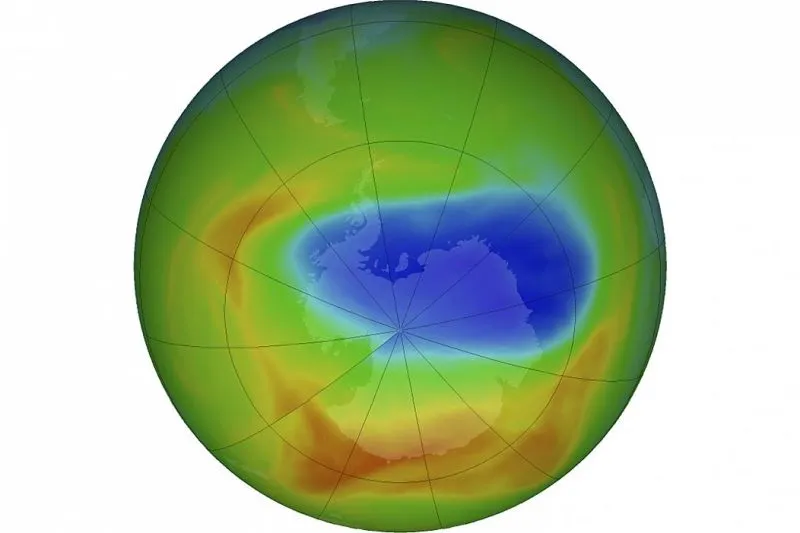Ozone Layer is Healing Continually, Redirecting Wind Flow Across the Globe
It’s no secret that human actions have mostly harmed the ecosystems and put the planet and its other inhabitants in jeopardy. The average global temperature is constantly increasing, wildlife is getting destroyed, and climate is changing its patterns rather peculiarly – and all owing to the man’s notion of progress.
A couple of decades ago, the researchers and scientists discovered that the ozone layer that serves as a shield from Sun’s ultraviolet radiation in the Earth’s stratosphere, was depleting at an alarming rate. The production of ozone-depleting substances (ODSs) by mankind has caused a hole in the layer above Antarctica.
To avert the consequences of this damage, the global communities signed the Montreal Protocol in 1987, which banned the production of ODSs. Three decades later, the internationally agreed protocol has resulted in some positive outcomes.
The hole in the ozone layer above Antarctica is continuing to recover and it is leading to changes in atmospheric circulation, the flow of air over the surface of the earth that causes winds.

This image from NASA shows a map of a hole in the ozone layer over Antarctica in October 2019 / Image: Goddard Space Flight Center/NASA
Antara Banerjee at the University of Colorado Boulder and her colleagues used data from satellite observation and climate simulations to model the changing wind patterns related to the layer’s healing.
Before 2000, a belt of air currents known as the mid-latitude jet stream in the southern hemisphere had been continuously shifting toward the South Pole. Another tropical jet stream called the Hadley cell, which is responsible for trade winds, tropical rain-belts, hurricanes, and subtropical deserts had been getting wider.
Banerjee and her team found out that both of these trends stopped and began to reverse slightly in 2000. According to Banerjee, this change couldn’t be explained by random fluctuations in climate and they are a direct effect of the recovering ozone layer.
The study refers to the Montreal Protocol as the major contributing factor. Be that as it may, the global efforts to reduce greenhouse gases was only put in effect when the world encountered the rapidly spreading COVID-19 coronavirus pandemic.
The global lockdown to curb the spread of the virus had forced the industries and factories to remain shut for the designated period of time. Owing to the shutdown, the global air pollution has reduced and the significant healing process in the ozone layer has been discovered simultaneously.
Alterations in the path of a jet stream may influence weather through shifts in atmospheric temperature and rainfall, which could lead to changes in ocean temperature and salt concentration.
Despite the ban on ozone-depleting substances, these chemicals have very long lifetimes in the atmosphere, so full ozone recovery isn’t expected to take place for several decades.
According to Banerjee, the ozone layer will also recover at different speeds in different parts of the atmosphere. For example, the ozone layer is expected to recover to the 1980s levels by the 2030s for the northern hemisphere mid-latitudes and by the 2050s for the southern mid-latitudes, while the Antarctic ozone hole will probably recover a bit later in the 2060s.
Although the news of ozone layer healing is a positive result of the global shutdown, it might not be for long. As soon the mankind emerges out of this ordeal, the world will go back into industrial and anthropogenic activities, leading to further damage to the planet.
Via: Global News


